I don’t think I’m the only one to have a love-hate relationship with the Tour de France. Under the stewardship of Henri Desgrange, the early tours were supposed to test riders to their absolute limits. For years Desgrange prevented the use of dérailleur gears on the basis it would make it easier for the riders. The motto of Desgrange was – make it as long, painful and difficult as possible. The more pain, the better theatre. Either Desgrange really enjoyed watching other people suffering or he was a very astute businessman – knowing the kind of race that would help sell newspapers.
Unsurprisingly riders often rebelled against this pugnacious organiser. In 1910, after slogging his way up yet another interminable Alpine pass (remember no gears, heavy steel bikes and rough tracks in those days) the great Octave Lapize started berating the tour officials with the greatest vigour – “You’re assassins! All of you!”
Riders were attracted by the fame and money the race offered, but at the same time suffered copiously to earn it.
I’ve long had a love-hate relationship with the tour, ever since the early days of being mesmerised by the sight of riders climbing the Alpine passes in the early 1990s. These were the days of epic duels between Tony Rominger and Miguel Indurain. I don’t think Rominger could ever beat the super-cool Spaniard but it was edge of seat stuff. It seemed there could be no purer sporting contest than relying on your own stamina and efforts in dragging yourself up 2000 metre passes and 250Km stages for days on end. The only downside was the rest days when you had no cycling to watch; once you’ve got your drug of watching the tour, you feel something is missing when it stops.
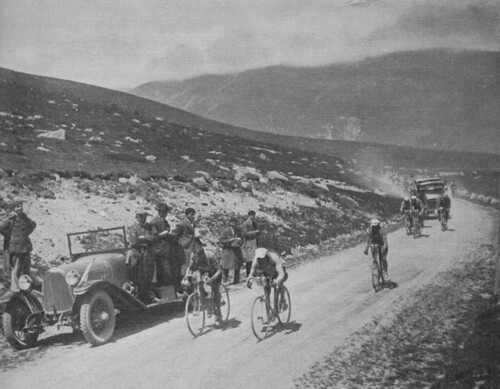
top three photo by Numerus CC
But, as soon as I was hooked on this pure sporting contest the issue of doping started to rear its ugly head. At first it was marginal, whispers and suspicions from failed former ex-pros, but nothing concrete; cycling closed ranks and issued calm official denials – ‘there’s no problem here’. But, the epic 1998 tour and Festina scandal blew the lid off doping and it seems the tour has been struggling to put it back on ever since. The Tour became a test not just of cycling but, who was doping? who to trust? which excuses to believe? (my favourite btw: is R.Rumsas’ wife stating she was taking around 100 phials of EPO for her own personal use. I think the joke turned sour when the French police accepted her confession and had her arrested.)
Then there’s the problem of drug cheats who are welcomed back into the peleton. To some commentators it’s just feels like doping is part of the course. You take your chance and if you get caught, bad luck – next time just make sure you don’t get caught and embarrass the sport. I think my height of disenchantment with the Tour occurred when Richard Virenque was welcomed back into the peleton a year after his doping escapades. It was the flimsiest of bans for the most extravagant of doping careers. True, at the time, many were doping, but Virenque had really stretched it to the limits – of course vigorously denied until the final, inevitable tearful confession in a French courtroom. Yet, his pathetic denials and confessions only seemed to endear him to the French public who praised him as great champion for 7 Polka Dot Jerseys (presumably the Polka Dots symbolising needle points all over his body). To myself, still attracted by a mythical, Olympic ideal, dopers are like frauds who cheat their way to their top and deserve no place in the sport at all. Yet, the return of Virenque and others was greeted with a suspiciously stony silence – the classic sweeping under the carpet.
Just to complicate matters even further, there are those who dope, repent and claim to be now whiter than white. How can you not want to give people a second chance? Are perhaps cyclists just victims of the pervading culture and pressures from commercial sponsors? Definitely some have turned over a new leaf, though there are plenty of others who manage to get caught a second time.
But, no matter how disenchanted you get with all the excuses of ‘contaminated cows‘, ‘I felt under pressure for results‘ and ‘tainted supplements’, it can never quite overshadow the overwhelming spectacle which is the Tour. Even if every single current pro failed a test and got banned for life, there would be more riders willing to take their place, and we would still turn out to watch them pedalling ‘a tempo’ through the glorious French countryside and Alpine scenery.
As soon as I see those images of the peleton gliding along the French countryside, I’m hooked. It doesn’t matter most stages are as boring as watching paint dry, there’s something aesthetically pleasing about seeing 180 riders passing serenely through fields of sunflowers. And of course, you can always tell yourself that maybe this is the stage where something really exciting will happen.
But, another problem with the tour is that a ‘quick 5 minute glance to see what’s happening’ can become several hours viewing. You can always try and justify to yourself why it’s OK to spend all July glued to the TV – the educational benefits of learning a few French words, learning about tactics for a race you’ll never be able to enter, (and if you watch Eurosport, learning the best local Burgandy of the region). But, no matter how hard you try you can’t avoid the fact that you know deep down you should be doing something more productive than watching a four hour stage destined to end in a bunch sprint.
A blurry Mark Cavendish By F.d.W.
For some reason, the Tour brings out the hopeless optimist in me. I spent the entire 1990s expecting someone, anyone to be able to attack and drop Lance Armstrong in the mountains. I think it happened about once. Jan Ullrich finally got the better of Armstrong for all of about 2 miles because Armstrong was severely dehydrated. It was exciting stuff, but how many hours I watched to see that tiny little attack. At least I got my reward a few years later, when a relatively unknown Fillipo Simeoni attacked Armstrong on the Champs Elysees – breaking all Tour etiquette and getting spat on for his troubles. That’s another story (and unsurprisingly it has doping at it’s heart) But, that was one of the great moments of the tour for me.
Lance usually evokes strong opinions. But, love him or hate him, you can’t deny Lance dominated the Tour for seven consecutive years. Photo By eugene
Then there’s the time when I did actually watch a really exciting stage. Never will I forget the day I turned on the tour ‘for just 5 minutes’. But, because Flloyd Landis had gone on an attack, I ended up watching the whole stage for the next four hours. When he reclaimed the yellow jersey at the end of the mountainous stage, I thought I’d witnessed one of the world’s greatest sporting moments of all time. The euphoria lasted until a few weeks later when it was reported he’d tested positive for testosterone during the stage. Some will say in hindsight, it was inevitable he was doping, but I’m the hopeless optimist – always wanting to believe in pure sporting achievement. But, I guess that’s the Tour – liable to excite, disappoint, bemuse and confuse all in a single day.
And so we always seem to return to the seemingly unending undercurrent of the Tour – drugs, doping, cheating. Will it be possible to one day enjoy the Tour de France without spending 50% of the time trying to guess whose taking dope or not? I hope so, but given human nature, it might take a long time.
There are different approaches to the doping problem. At one extreme you can say why bother?, there probably all at it anyway. One type of cycle gan will unconditionally support anyone even if a rider has raised their blood hematocritlevel to 60% and take enough chemicals to turn the sewage system radioactive. It’s one way to keep enjoying the sport.
Another point of view is to only support those who are unmistakably clean. The best riders are those who not only don’t dope but are willing to spit in the soup and testify against doping doctors. To some the real heroes of the tour are the Paul Kimmage’s – the guy who got spat out the back of the tour because he wasn’t good enough / not willing to take a few more stimulants. The heroic failure, the plucky underdog, I guess it’s something the British always have a soft spot for… (BTW: I’m still trying to struggle with this new British cycling habit of actually being really rather good, and yes I do believe the team are clean.)
Well, the tour is back with us. I already have a book at hand to make notes on all the best local wines of the Bordeaux region. I don’t even drink alcohol, but you’ve got to get in the mood, after all it’s the tour and if you can’t spend 3 hours a day watching the Tour on telly, how can you call yourself a proper cyclist?
The 2011 Tour
Of course this is going to be the best ever tour, and I’m currently in love with the tour once more. I know somewhere it could all end in disappointment, but I also know whatever happens I’ll keep coming back for more…
Vive La Tour!
Do you have a love-hate relationship with the tour?
Related
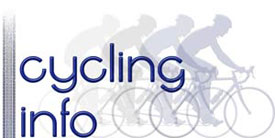
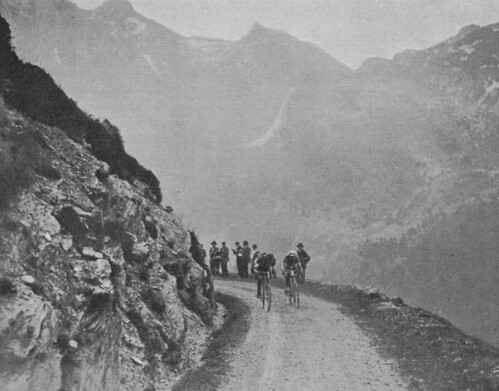
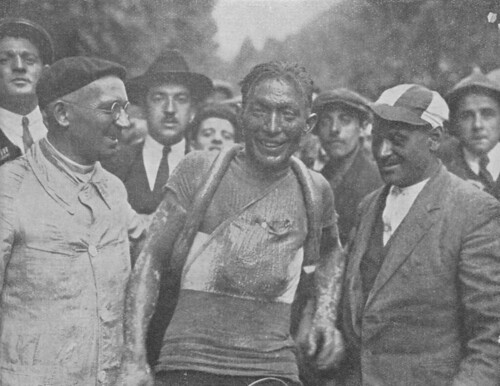
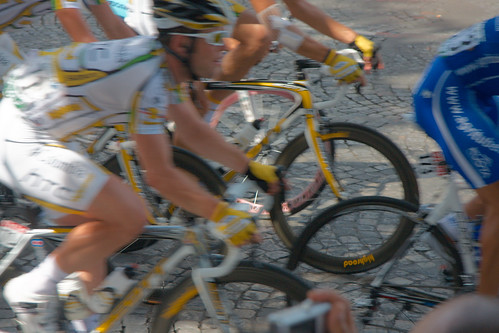
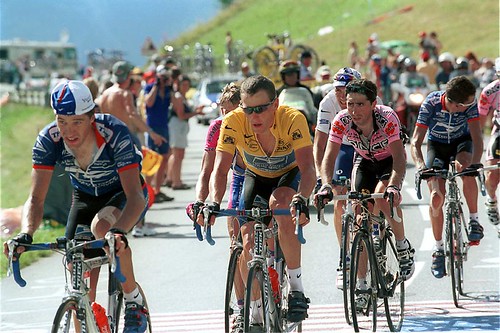
Which year was it, when Fillipo Simeoni attacked Armstrong on the Champs Elysees?
2004.
http://en.wikipedia.org/wiki/Filippo_Simeoni#Feud_with_Lance_Armstrong
There is no Easter Bunny, there is no Santa, and none of the riders of the Tour are clean- only those who haven’t been caught doping yet. And yet, I’m watching it, even though I detest it. Yes, I completely understand love/hate. I think that when the tour directors saw the Americans coming to the Tour, they saw $$ in front of their eyes and became selectively blind to the doping that was going on (Lance?). No one has yet to explain to me how an aging American racer whose body was ravaged by cancer could beat younger, doped competitors. Think about it- EVERY single one of Lance’s top rivals was swept up in Operation Puerto. Every one. And Lance wasn’t doped? I want to believe, I can’t believe. Because there is no Easter Bunny, and there is no Santa.
I loved this post and loved Mikes reply above aswell.
Now I love getting out and about on my bike but as mentioned above, to be able ride for upto 5 hours per day for 22 days and find it within yourself to be able to sprint to the finish is something I could never comprehend.
These guys are top athletes and although it the tour may have become some what easier since it beginnings, my hat still comes off to those who compete.
Great post as always!
Ah Tejvan,
I envy you your single status and ability to sit glued to the TV for whole stages of the Tour!
I have to make do with the highlights at 7pm!
Like you I’m pretty sure the Brits are drug-free, and I’m also almost certain that so was Armstrong – how else would the most drug-tested man in the world avoid getting caught!?
I think what intrigues me about the tour is the single-minded dedication needed to be at the top of your sport for 4-5 hours a day for 22 days, and still be able to sprint at the finish each day.
These guys are obviously phenomenally fit, and with a mental stamina that makes me feel positively wishy-washy.
Good luck to them all (except the dopers, of course).
Mike